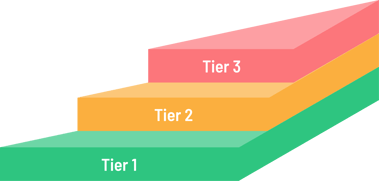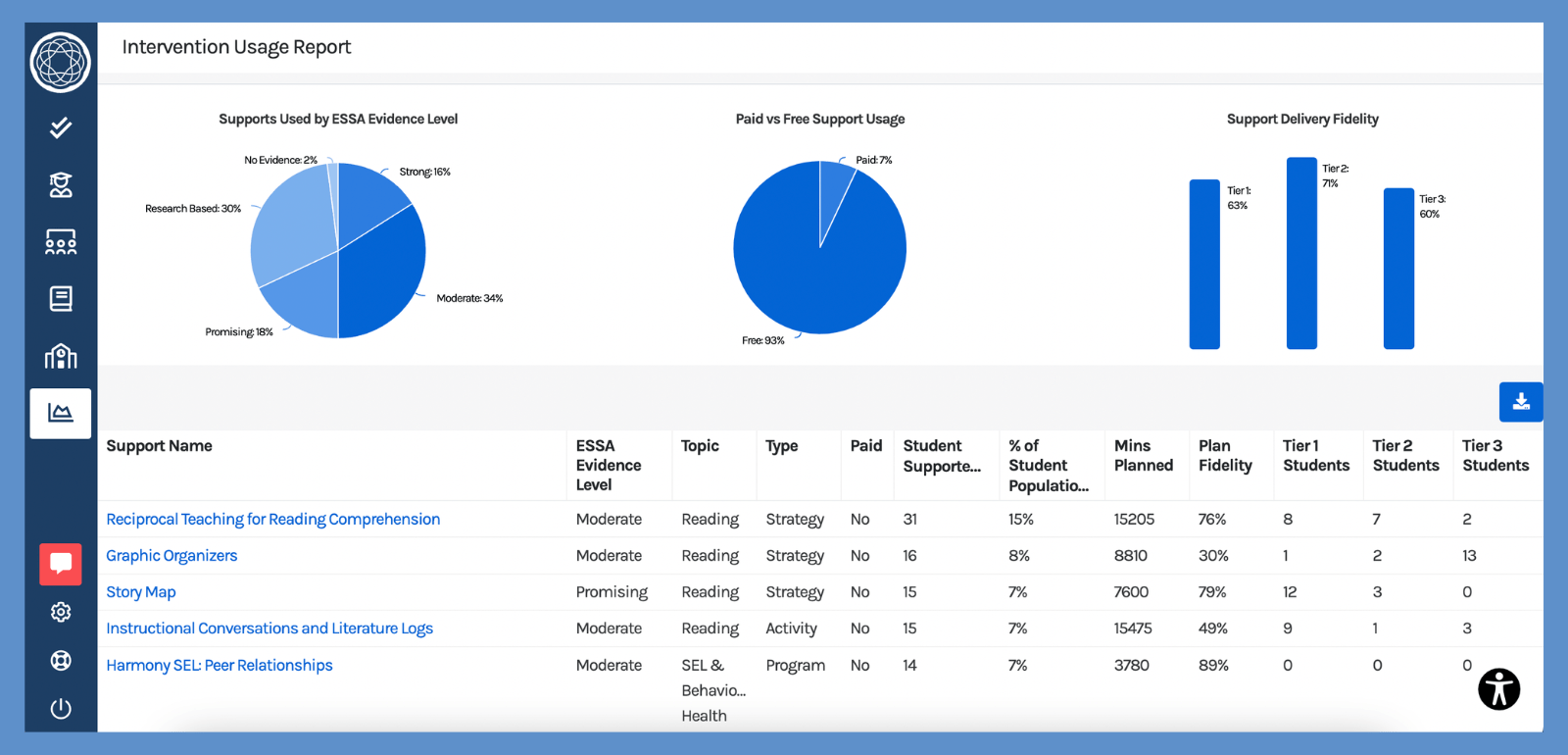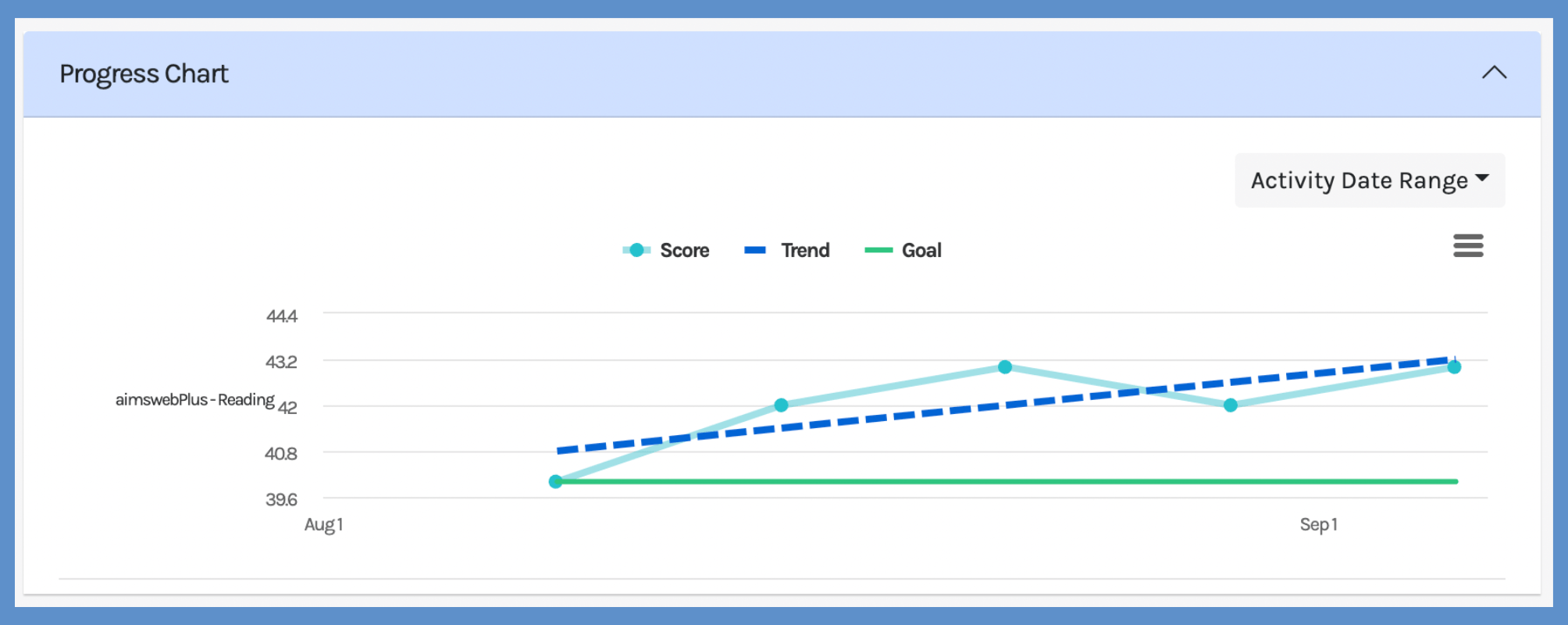During the past couple of weeks, I have facilitated Branching Minds’ “Foundations of MTSS” for two elementary campuses. I asked one of the principals what I should write about in a blog dedicated to MTSS on an elementary campus. She pointed out that she wanted to hear more about the layers of support illustrated in the graphic below. “Okay”, I thought I could work on that.
If you’ve ever seen the movie Shreck you may be familiar with the following quote: “Ogres are like onions. Onions have layers. Ogres have layers.” Well, the same could be said for a Multi-Tiered System of Supports—it’s multi-layered! Supporting students isn’t one-dimensional; it is 3-dimensional, with layers of support according to student needs.

Let’s spend a few minutes together reviewing what these “layers” of support look like on an elementary campus. My hope is that you recognize how MTSS layers support and promote both efficiency and effectiveness within an elementary school, and then apply this understanding to evaluate how well your current practices align with MTSS.
MTSS Layer #1 - Universal Screening and Tier 1 Support |
Universal screeners are used to address both academics and social-emotional wellness. Whether it is NWEA MAP, IReady, AIMSWEB Plus, or DIBELS, academic universal screening or SEL screeners such as DESSA-mini, BASC-3, or SAEBRS, these assessments give teachers and administrators a starting point for determining students' needs.
Branching Minds teaches routines for consistently analyzing universal screening data including:
- Engage in a data review for the purpose of strengthening universal instruction campus-wide.
- Identify students who may need additional targeted or intensified educational support / intervention.
- Measure historical growth and progress monitor the success of instruction and intervention.
Data from Universal Screening also helps teachers and administrators understand if the core curriculum is working and when to provide intervention or enrichment.
The importance of utilizing a nationally recognized universal screener cannot be overstated! From this one assessment teachers and administrators are able to:
- Identify students in need of additional support, and
- Determine the effectiveness of Tier 1 core curriculum instruction.
MTSS Layer #2 - Tier 2 Student Supports |
Now it is time to shift gears and focus on HOW to support these students. Being identified as an “at-risk” student does not necessarily mean a student needs a pull-out intervention.
You may have students who miss the cut score for success at the Tier 1 level by a very small margin. These students may only need added support within Tier 1 level instruction with progress monitoring. Students are more than a color on a triangle of support. Two students can show up as needing Tier 2 level support from their universal screener, but Student 1 misses the cut by 1 or 2 percentiles and Student 2 by 15 percentiles. These are two very different students even though they show the need for the same level of support. Look closely at the data and KNOW YOUR ASSESSMENT CUT SCORES.
The most efficient way to deliver support at the Tier 2 level is through groups of students with common needs. I recently spent a day supporting elementary teachers and the work they were doing during their intervention time or what they called “Tiger Time.” As I met with each grade level during their PLC time they shared how utilizing their universal screening data, along with other data points such as behavior and attendance helped them maximize their “Tiger Time.”
Students worked in small groups based on their common skill needs with teachers and interventionists across classrooms. For these student support groups to be successful, it is crucial that the teacher delivers these interventions and supports with fidelity at an appropriate duration and frequency.
Branching Minds allows campus instructional leaders to keep a pulse on the supports being utilized on their campus.

“The Center on Multi-Tiered System of Supports at the American Institute for Research” has a helpful infographic with an overview of the 10 Essential Features of Support at the Tier 2 level.
MTSS Layer #3 - Tier 3 Student Supports |
For this group of students, “The Center for Intensive Intervention at American Institutes for Research'' suggests implementing a Data-based individualization (DBI) approach to providing intensive intervention in academics and behavior. In this layer, students receive increased intensity and individualization of instruction and tailored support. It is crucial that the intervention being provided is evidence-based and students’ progress is monitored utilizing a valid assessment. Utilize this link for guidance on the 5 steps of the DBI process.
Teachers and/or interventionists are tasked with delivering explicit instruction based on DBI data for the student. This has traditionally occurred during a set time for intervention and delivered either one-on-one or possibly a couple students. However, when a large number of students need intensive instruction, elementary schools can schedule intervention so that explicit instruction can be delivered in a carefully structured group setting.
|
Explicit instruction is based on a guided practice method:
|
Students are given adequate opportunities to practice the skill/concept over multiple periods of time and are taught to mastery. Students with persistent challenges:
- Need much more practice, as many as 10 - 30 times as many practice opportunities as their peers (Archer, Hughes, 2011).
- Require frequent opportunities to respond in a variety of modalities—speaking, writing, and moving.
- Need immediate feedback and affirmation/correction.
Explicit instruction doesn’t happen without thoughtful planning. Student success is very dependent on the fidelity of explicit instruction implementation.
|
“How well you teach = How well they learn” - Anita Archer |
Additional resources:
➡️ Five Instructional Phases for Explicit Instruction
Layer #4 - The Cycle Continues
What else do I need to do?
Meet regularly to monitor student progress, make sure all students are receiving the support they need, and document your work! If it isn’t documented, it didn’t happen. As I worked with the teachers in elementary PLCs, they wanted to make sure that the work they did with students was visible and transparent for other staff associated with their students. Whatever layer of support a student receives; Tier 1 additional support, Tier 2 small group intervention, or Tier 3 individualized intervention, it is imperative to document that an intervention was delivered and progress monitor occurred in order to collaborate with other staff members and keep the momentum going.
These layers of MTSS work in tandem with each other to support students according to data from universal screeners and diagnostic assessments.
Branching Minds offers an efficient and effective platform to streamline documentation, collaboration, and communication to support students!

Whether or not you like onions or the movie Shreck, the fact remains that a robust MTSS on the elementary level is “layered” with levels of support wrapping around the entire student body. Let’s start peeling back those layers and get to the needs of our students.

Additionally, learn how MTSS supports secondary schools:
| Implementing MTSS at the Secondary Level: Answering 4 Common Questions | |
| MTSS in Secondary Schools: Major Challenges, and How to Overcome Them | |
| How MTSS Provides Foundational Support in High School |
Citations
https://mtss4success.org/essential-components/multi-level-prevention-system
Archer, A. L., & Hughes, C. A. (2011). Explicit instruction: Effective and efficient teaching. New York: Guilford Press.
.png?width=82&height=82&name=Sandra%20Spruell%20-%20Blue%20(1).png)
About the author
Sandra Spruell
Sandra Spruell is an experienced educator and educational consultant with a strong background in curriculum development, instructional leadership, and intervention strategies. As an Educational Consultant at Branching Minds, Sandra has held various leadership roles. With over three decades in public education, she has taught multiple grade levels and contributed to districtwide initiatives in curriculum design, teacher mentorship, and professional development. Holding a master’s in educational leadership and multiple certifications, Sandra is dedicated to improving student outcomes and supporting educators.

Your MTSS Transformation Starts Here
Enhance your MTSS process. Book a Branching Minds demo today.













.png?width=716&height=522&name=Addressing%20Foundational%20Reading%20Skills%20in%20MTSS%20(preview).png)
.png?width=716&height=522&name=MTSS-interventions-secondary-school(preview).png)